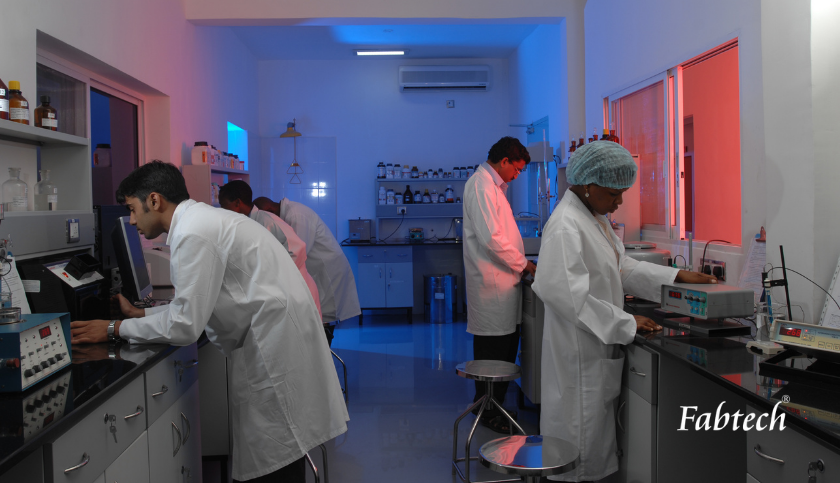Laboratory or a Cleanroom Laboratory? It’s about time the gap is bridged!

It’s the year 2022, and if one looks back to the two years gone by, the instant thought that will cross the minds of most of us is pretty much known. Well… Indeed! Life is replete with things we never imagined would gain prominence like ever before. Sanitizing, masks, gloves, frequent hand washing, quarantining, lockdowns – we have all been there, done that, and one can never be sure if the battle is over or even close to being over yet.
Of the many elements and subjects pertaining to the Covid19 pandemic, face masks, to a large extent, have been the prime protective tool for preventing transmission of the virus.
Needless to say, these masks are designed with the basic objective of protecting us from airborne particles of the virus. However, the properties of the masks may vary in terms of the level of effectiveness and protection that they offer. From non-medical masks, medical masks to N95 respirators, the scale of the safety of masks is more often than not aligned with the stringent protocols that different work areas demand. For example, a medical mask over a simple cotton mask is recommended in the pharma and biotechnology industry, where a strict level of protection is required to carry out research, experiments, and studies.
These areas encompass laboratories or relatively newer technology like cleanrooms. While the former involves carrying out processes that are further connected to maintain Bio-Safety levels, the latter is the facility that marks the first step in achieving the same.
A laboratory is generally a room with an uncontrolled environment where cleanliness level is restricted to common practices, such as using disinfectants to clean surfaces, tools, and equipment. Laboratories are used in schools and universities, industry, government, or military facilities but are found to be devoid of tight cleanliness standards, thereby giving rise to potential hazards arising out of contamination from particles that can be studies in bio-safety level. (You may refer to the blog (Link) to learn the classification of the same).
There is a wide range of work that demands uncompromised quality, safety, and integrity. The cleanrooms readily come into play to cater to the needs of industries where airborne particulates have to be kept at the barest minimum level. Unlike general laboratories, a cleanroom is a well-controlled, well-isolated rigorous environment, where clean and filtered air is continuously forced in, and pollutants and other impurities arising due to dust, airborne microbes, chemical vapours, and aerosol particles are forcefully minimized.
Here, the air is regulated by AHU (Air Handling Unit), an enclosure within an HVAC (heating, ventilating, and air-conditioning) system. This set-up is designed bearing in mind the critical environment as well as the special requirements, as defined by the federal industry standards. The HVAC system includes high-efficiency particulate air (HEPA) and ultra-low penetration air (ULPA), which are the most common filters used in cleanroom applications. These filters provide support to ensure that the air entering the cleanroom is optimally filtered, continuously circulated, and the contaminants getting generated internally in the form of personnel, tools and equipment, supplies, facility, fluids etc., are kept within the specified limits.
Hence, key factors viz. air pressure, temperature, air velocity rate, humidity, filtration requirement are the major contributors to the successful and sound manufacturing process undertaken in a cleanroom. In addition, furniture and attire (suits, gloves) which are designed in regard to the minimal production of particles, also play a vital role in safeguarding the environment. Another important factor is the use of equipment, glass ware, plastic ware, lenin etc. which follow guidelines of cleanroom for more safety features.
It is thus a well-established conclusion that a cleanroom laboratory is a real necessity, especially in applications that call for a sterile and clean environment, sensitive research and development processes – most importantly, for protecting human health through appropriate prevention of the release of unwanted particles.
Today, with the rising concerns and the potential threats to product purity in the manufacturing process, and to the operators/technicians themselves, increasingly technical usage of materials, having a cleanroom surely stands as an indispensable option. Also, by adhering to the rigid specifications for particulate material and meeting the international standards, cleanroom offers manufacturers a platform to earn themselves higher profitability and increase their customer base.
So, turning an archaic laboratory into a cleanroom laboratory is definitely a worthy exercise, for it has the proven ability to eliminate severe consequences, promise maximum efficiency and deliver at the required level of compliance for a controlled environment.
Fabtech Cleanrooms are not just cleanrooms but embodiments of a much-needed human approach for a sustained future.
We help you upgrade and evolve your laboratory and embark on this meaningful and fruitful way ahead.
Connect with us to build your next cleanroom project…We are just a thought away!
Categories
Recent Posts
Subscribe
Never miss a post from Fabtech. Sign up to receive updates direct to your inbox.
